In my master thesis, I investigated what happens with the molecular composition of soil organic matter (SOM) when a deciduous (also known as broadleaved) forest is changed to a spruce forest. The soil samples analysed were thus from two different forest types, spruce and deciduous forest. Furthermore, I wanted to see whether the effects are different when the soil acidity is different. Therefore, samples were also from two so called soil domains: The exchange domain and the aluminium domain. The former has a higher pH value but when the tree species change from deciduous to spruce, the pH value might drop and the soil can change to the aluminium domain (lower pH value), possibly influencing soil organic matter composition.
To analyse this, I conducted Pyrolysis Gas Chromatography Mass Spectrometry (see below). The study was part of a bigger project with the goal to find the effects of soil degradation in forests and peatlands on the storage and persistence of soil organic matter. On this page I show some of the results of my research as well as methods I applied. If you want to learn more, you can also check out my posts.
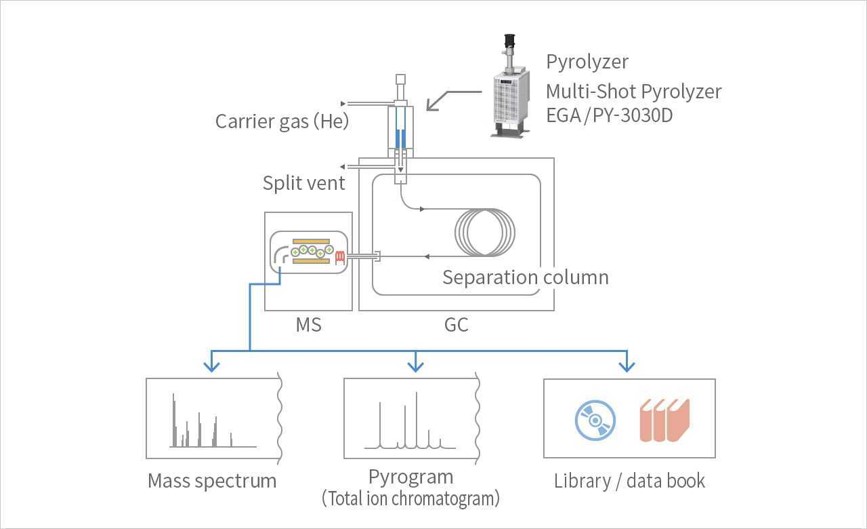
Pyrolysis
Applying Pyrolysis Gas Chromatography Mass Spectrometry means that I had soil samples which were burnt to release the organic molecules present in them (pyrolysis). These organic molecules were then inserted into a Gas Chromatograph there they were separated in a column. Afterwards, the molecules travelled one by one into a mass spectrometer where they were bombarded by electrons, leading to the formation of ions for in every molecule which came out of the gas chromatograph. These ions could then be detected in the mass spectrometer and a mass spectrum was created. This process also yields a pyrogram which can be used, together with the mass spectrum, to identify the molecules in the sample.
Image source: Frontier Lab 2021.
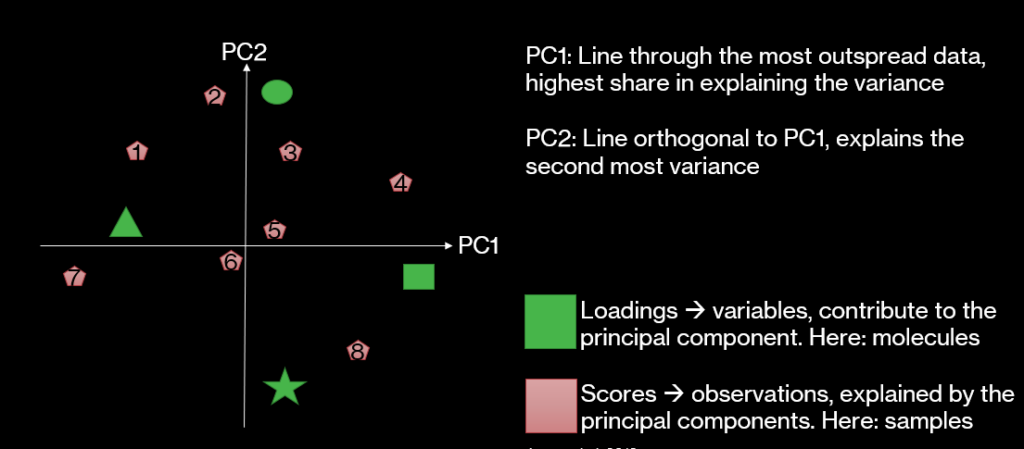
Principal Component Analysis
The results I wil present in the following are based on principal component analysis. It is a statistical method to make sense of data which has a lot of variables. It clusters the observations according to certain processes which are reflected by the axis. The first axis (PC1) explains most of the variance of the data and the second axis (PC2) is orthogonal to it and explains the second most of the variance. There are as many axis, or principal components (PCs) as there are variables. However, I only used the first 4 as they explained more than 75% of the variance of the dataset. If you want to learn more about it, I found this website very helpful.
In the following, some principal component graphs are shown. I interpret the PC3 axis to represent degree of decomposition: On the positive side, the samples with the highest contribution of decomposed material are located while on the left side samples with relative higher abundance of relatively fresh material are located. The PC4 axis shows the difference in input material with the positive side representing a molecules typically found in spruce and the negative side molecules typically found in deciduous samples.
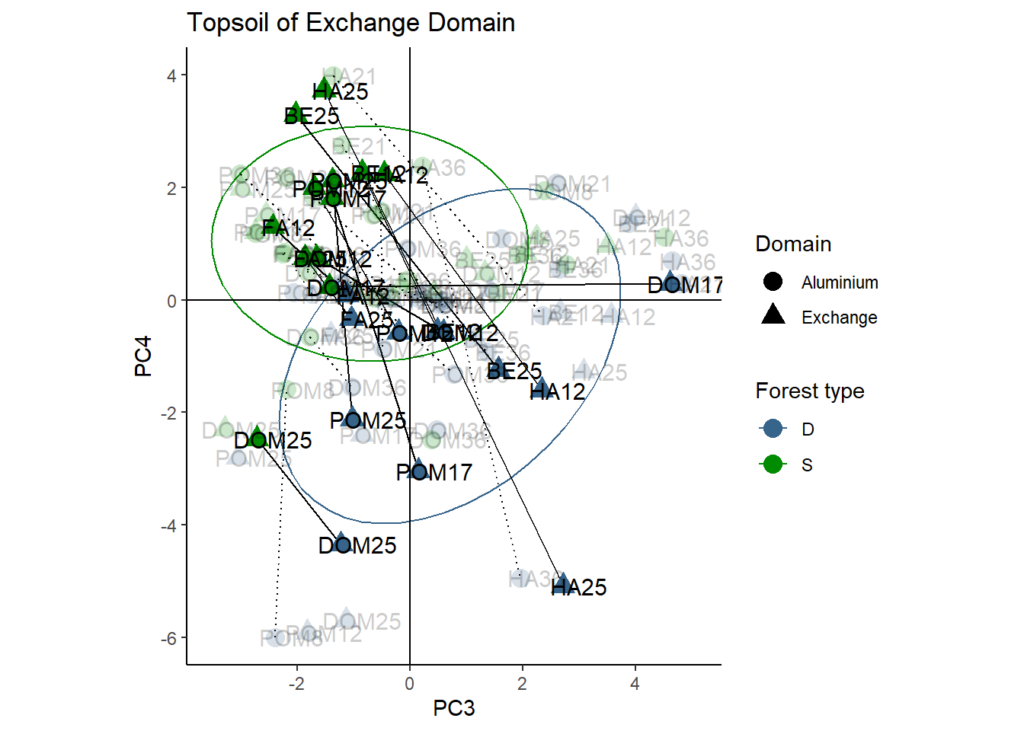
Topsoil composition in the exchange domain
Here, you can see the clustering of the topsoil samples in the exchange domain. The blue shapes are the deciduous samples and the green the spruce samples. As you can see, they cluster very differently on the graph. The deciduous samples show a relatively higher degree of decomposition than the spruce material
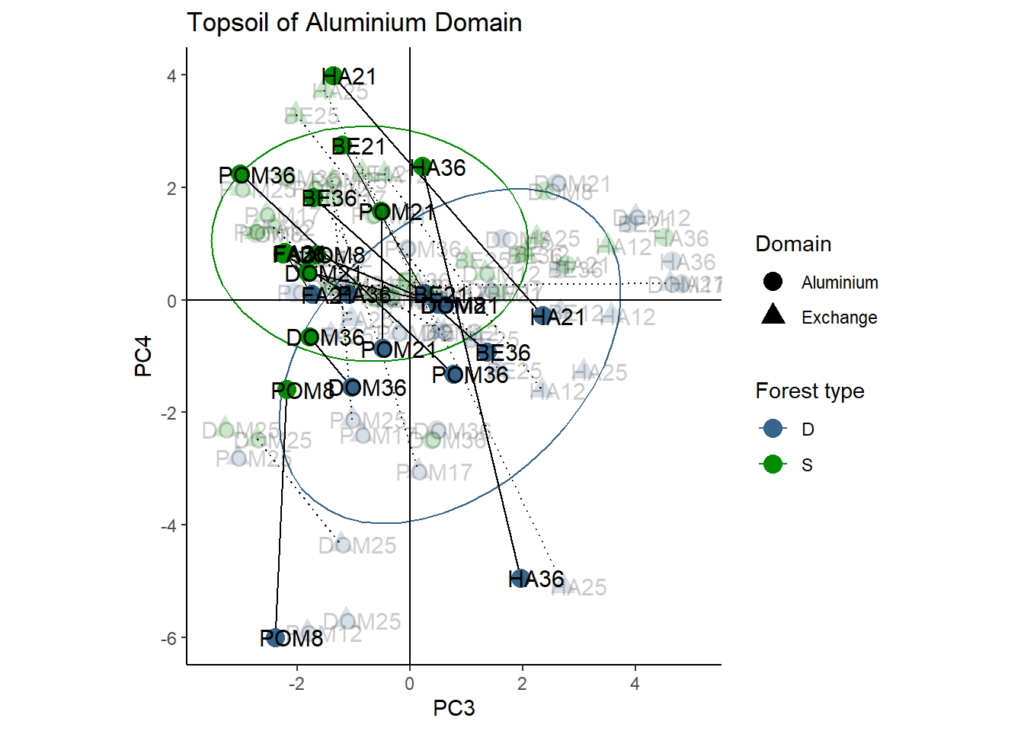
Topsoil composition in the aluminiun domain
A similar trend is observed in the aluminium domain.
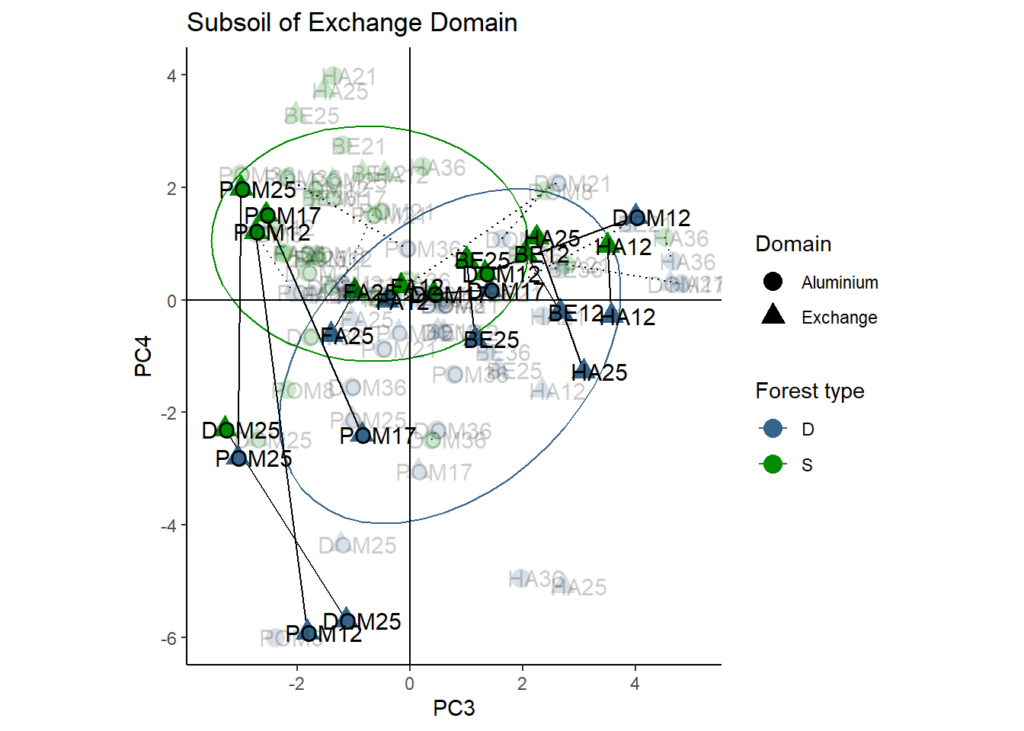
Subsoil composition in the exchange domain
In the subsoil, however, this difference in decomposition is not as clear. In the exchange domain, however, the difference in input material (along the PC4 axis) can still be observed.
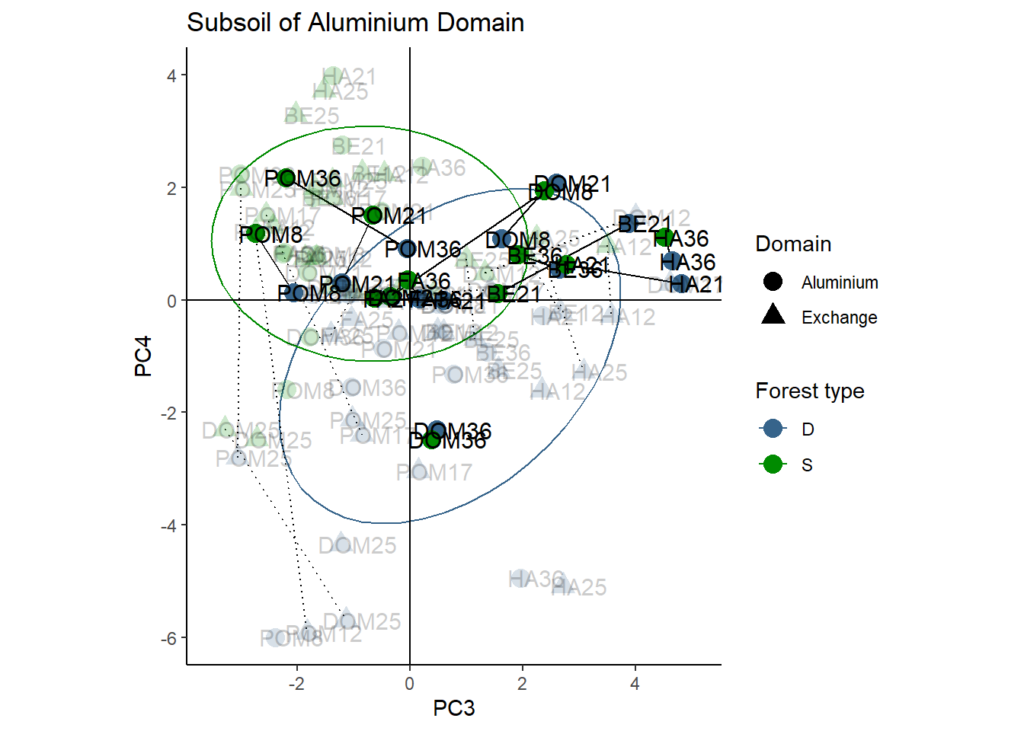
Subsoil composition in the aluminium domain
Interestingly, in the aluminium domain the difference between the tree species is much less pronounced. This indicates that if the soil is already relatively acid, the change in forest type does not have such a big influence on the subsoil.
These results show that there is indeed a difference in soil organic matter composition between forest types and that this difference is most pronounced in the topsoil. In the subsoil the difference is not that large and much less clear when the soil is already acid. I hope to publish a paper about this in the near future and will then update some of the results here as well and include some discussion points as well.
